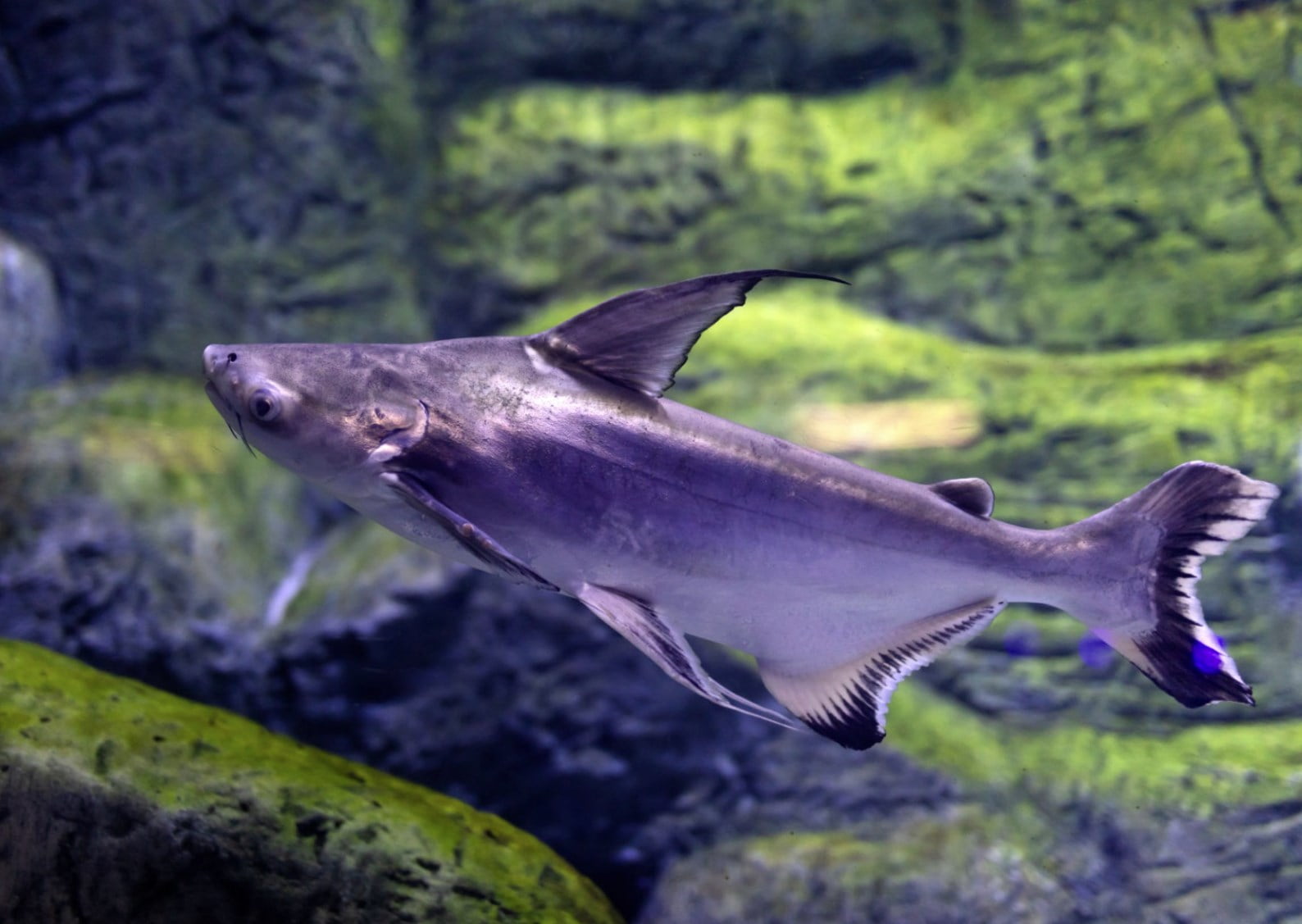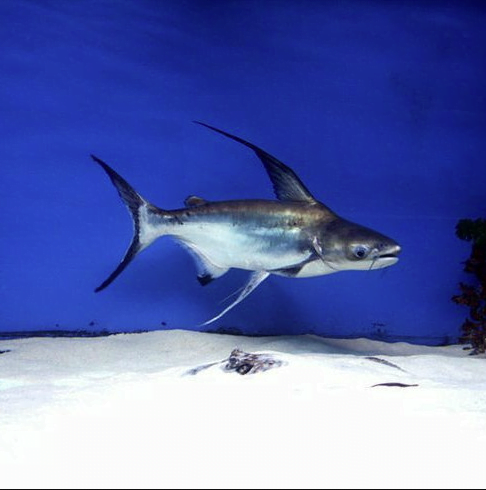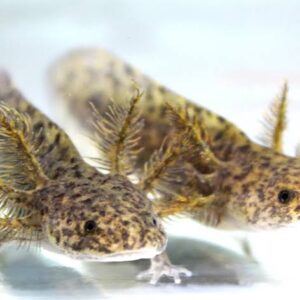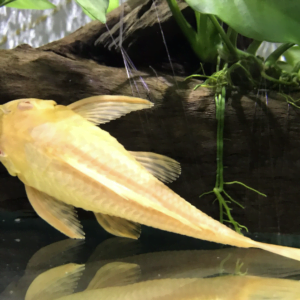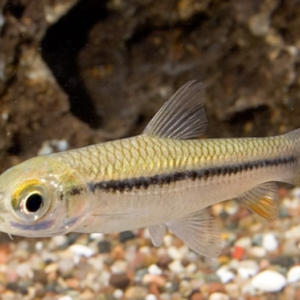Paroon Shark
Fascinated by the Freshwater Paroon Shark? Explore this giant, shark-like catfish, but understand its significant care needs and colossal adult size before considering one.
₱5,000.00
Your live fish may not match the image shown due to natural variations in each species. Each companion animal is different in shape, color, and personality.
Scan to Purchase
Here’s a care guide for the Paroon Shark (Pangasius sanitwongsei), also known as the Giant Pangasius, in bullet points:
Tank Setup:
- Enormous Tank: Paroon Sharks can grow exceptionally large, so a tank of at least 1,000 gallons or more is required for an adult.
- Tight Lid: A secure lid is essential to prevent escape, as they are known to jump.
- Substrate: Use sand or fine gravel as substrate to prevent injury to their barbels.
Water Conditions:
- Temperature: Maintain water temperature between 75-82°F (24-28°C).
- pH Level: Keep the pH between 6.5 and 7.5.
- Water Hardness: Maintain moderate water hardness (5-12 dGH).
- Regular Water Changes: Frequent water changes are essential to maintain water quality in such a large tank.
Diet:
- Carnivorous: Paroon Sharks are carnivores and need a high-protein diet.
- High-Quality Pellets: Offer high-quality, large-sized pellets designed for large catfish.
- Live or Frozen Foods: Provide live or frozen foods like feeder fish, shrimp, and other meaty items.
- Avoid Overfeeding: Be cautious not to overfeed, as they are prone to obesity.
Tank Mates:
- Limited Compatibility: Due to their size and predatory nature, it’s often best to keep them in a species-specific tank.
Behavior and Activity:
- Solitary and Territorial: Paroon Sharks are typically solitary and can be territorial.
- Bottom Dwellers: They primarily occupy the bottom of the tank.
Tank Decor:
- Minimal Decor: Paroon Sharks can be quite destructive and may uproot plants or decorations, so keep decor minimal.
- Provide Hiding Spots: Include caves, driftwood, or PVC pipes to offer hiding spots.
Health and Disease:
- Quarantine New Fish: Quarantine any new fish before introducing them to the main tank to prevent disease outbreaks.
- Monitor Health: Keep an eye out for signs of stress or disease, such as loss of appetite, rapid breathing, or unusual behavior.
Handling and Safety:
- Beware of Sharp Edges: Paroon Sharks have sharp spines on their dorsal fin. Handle them with care to avoid injury.
Legal Considerations:
- Check Local Regulations: Ensure you comply with local and international regulations regarding the keeping of Paroon Sharks, as they are restricted or banned in some areas due to their potential impact on local ecosystems.
Paroon Sharks are massive and powerful fish that require an immense tank and specific care to thrive. It’s essential to provide a suitable environment with minimal decor and to meet their dietary and environmental needs. Additionally, understanding their solitary and territorial nature is key to their well-being in captivity.
| Size | Small, Medium, Large |
|---|
Related products
-
Axolotl (Wild Green Morph)
Earn 35.00 Reward Points₱4,000.00Original price was: ₱4,000.00.₱3,500.00Current price is: ₱3,500.00. Add to cart -
Golden Shark (Mad Barb)
Earn 35.00 Reward Points₱4,500.00Original price was: ₱4,500.00.₱3,500.00Current price is: ₱3,500.00. Add to cart

